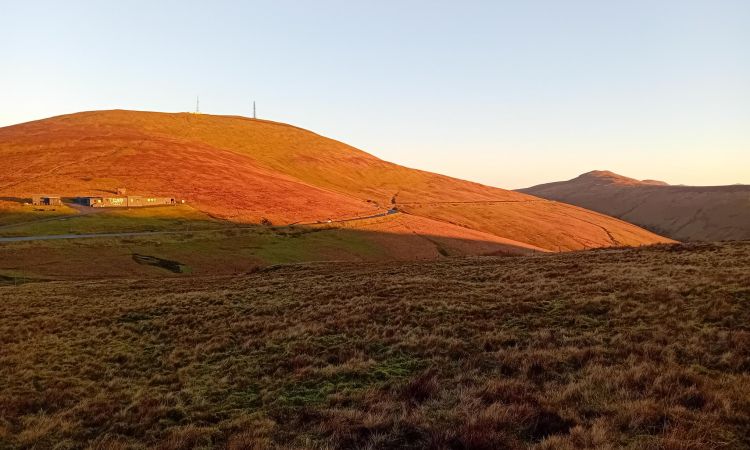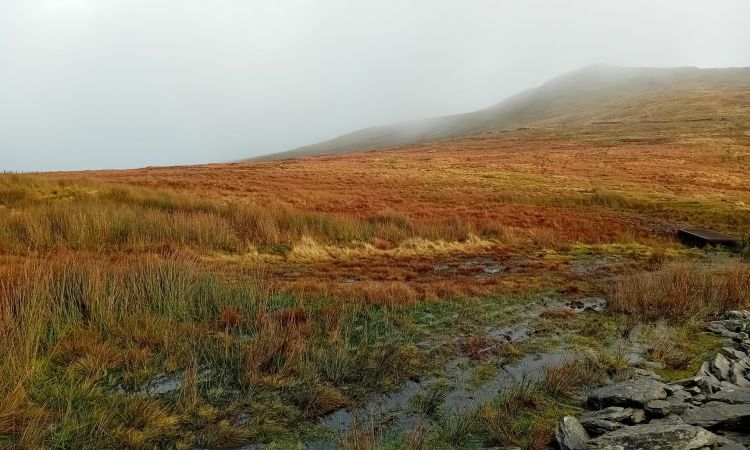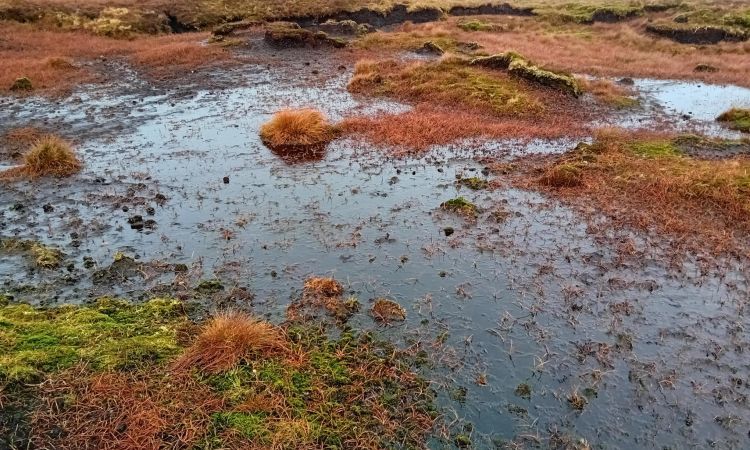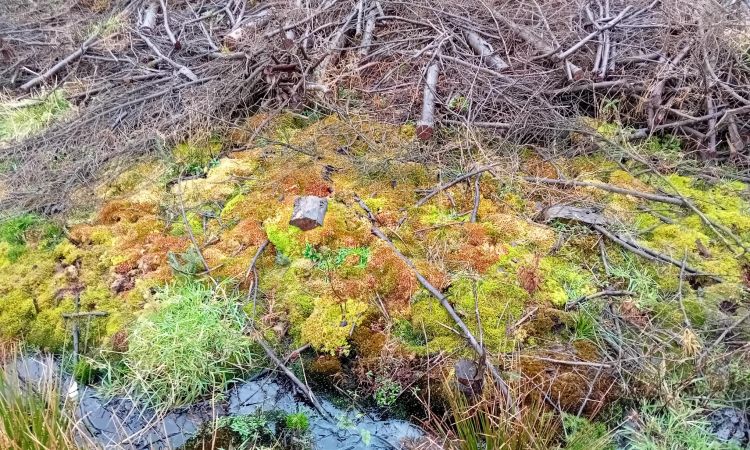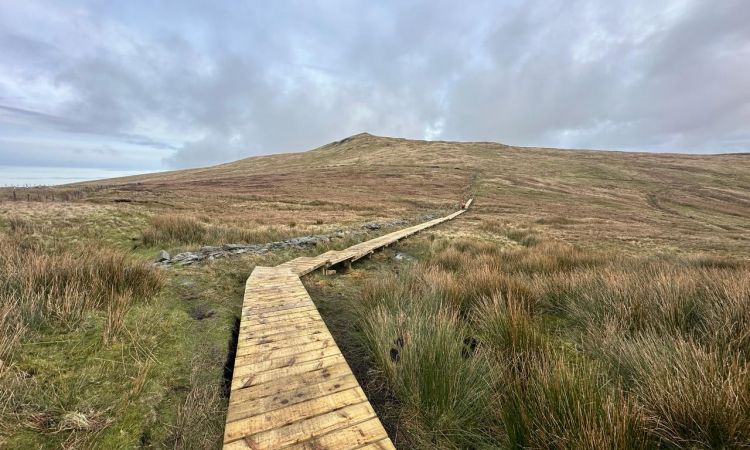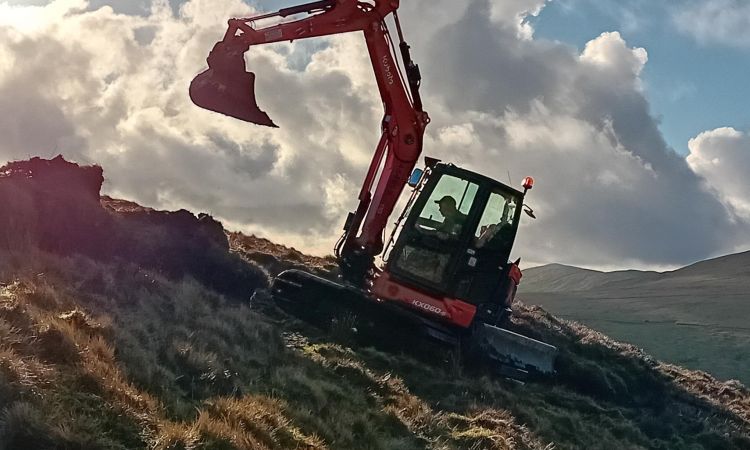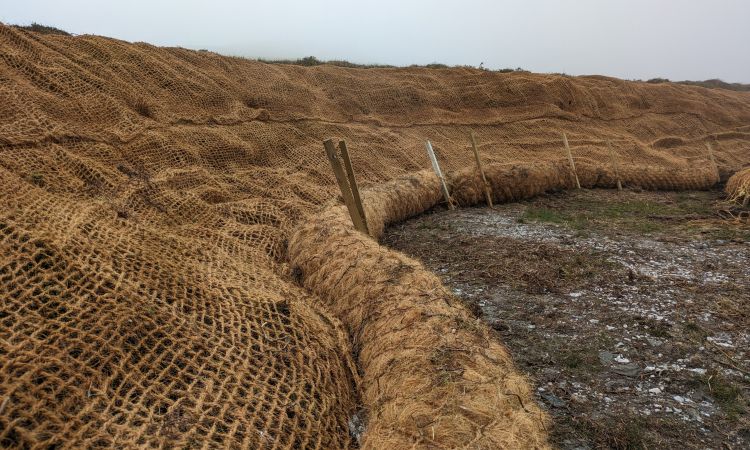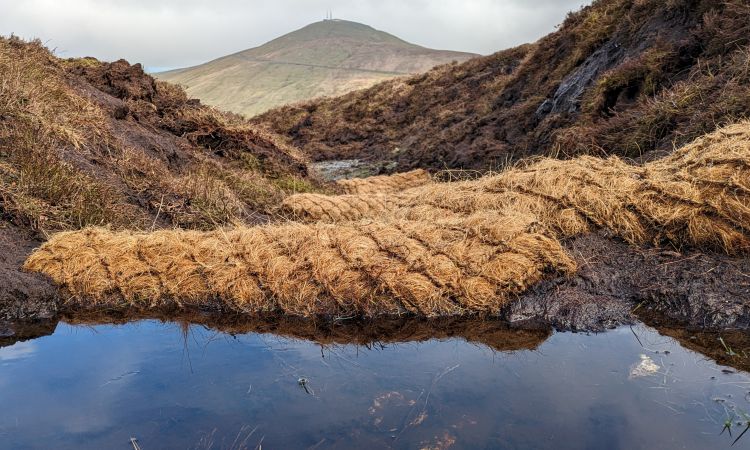Manx Peatland Project
Introduction
The upland areas of the Isle of Man are covered with blanket peat up to 3m deep, but generally shallower. This peat has historically been drained and cut for fuel and much of the habitat is no longer peat-forming, although pockets of blanket bog habitat still remain. Some areas of upland peat have been afforested with conifer plantations. There are also significant lowland peat deposits on the Island, but these have also historically been cut for fuel and drained for agriculture. Many of these areas are still wet, but are covered with willow scrub. This project aims to begin the process of restoring peatland habitats on the Island as part of our Climate Change Action Plan. The focus will initially be on the most degraded upland areas but it is hoped that funding will be extended to include the majority of peatland sites. The upland areas of the Island are home to an important assemblage of breeding birds, including hen harrier, curlew, snipe, skylark and meadow pipit. Much of the uplands are owned by the Isle of Man Government and leased to tenants for rough grazing, predominantly by sheep.
Description
Upland areas included in the first phase of this project are in the central hills of the Isle of Man, within the Laxey and Sulby catchments. They include areas where peat was cut for domestic fuel, leaving eroding peat hags, and areas where recreation pressure has lead to the localised compaction and erosion of peat. Historic management of these areas has lead to a habitat dominated by acid grassland species, but with sphagnum mosses widespread in wetter places. Some areas, notably on Beinn-y-Phott, have more typical bog habitat, with an abundance of heather, crowberry, sphagnum and bog asphodel. Other areas are covered with a mosaic of heath, bog and grassland habitat.
Project Aims
The project aims to initially focus on the most degraded areas of peat, where restoration actions are likely to have the most impact. Work will include re-profiling peat hags, blocking drainage ditches and altering stocking levels or management. We are also planning to fell an existing conifer plantation to restore moorland and bog habitat and create boardwalks to protect sensitive areas from recreation impact. It is hoped that the work will deliver protection of existing peat and an increase in the extent of peat-forming habitats. It is hoped that these improvements will also result in improved habitats for wildlife, natural flood management, increased resistance to wildfire and drought and improved sustainable access to upland areas.
Restoration Delivered
A trial area has been restored on an old turbary site that was highly degraded. Hags were re-profiled and bare areas covered with heather brash and coir netting. Heather bales were used as sediment traps and livestock were excluded using fencing. After a couple of years, this site is showing good signs of re-vegetating, although there is some on-going maintenance to be undertaken.
Further re-profiling work has been undertaken in Jan / Feb 2024 and a boardwalk has been installed to protect a sensitive area of bog from recreation impact.
{"zoom":12,"lat":54.2516477,"lon":-4.499833,"markers":{"0":{"lat":54.247394636,"lon":-4.485241752}}}
Project Name: Manx Peatland Project
Organisation / Lead partner: Isle of Man Government
Location: Isle of Man
Approximate area covered: 600 ha
Predominately: Upland
Peat Habitats: Blanket bog, Upland heath
Project Type: Restoration, Management, Communications, Citizen science/ community engagement.
Year Project Began: 2020

